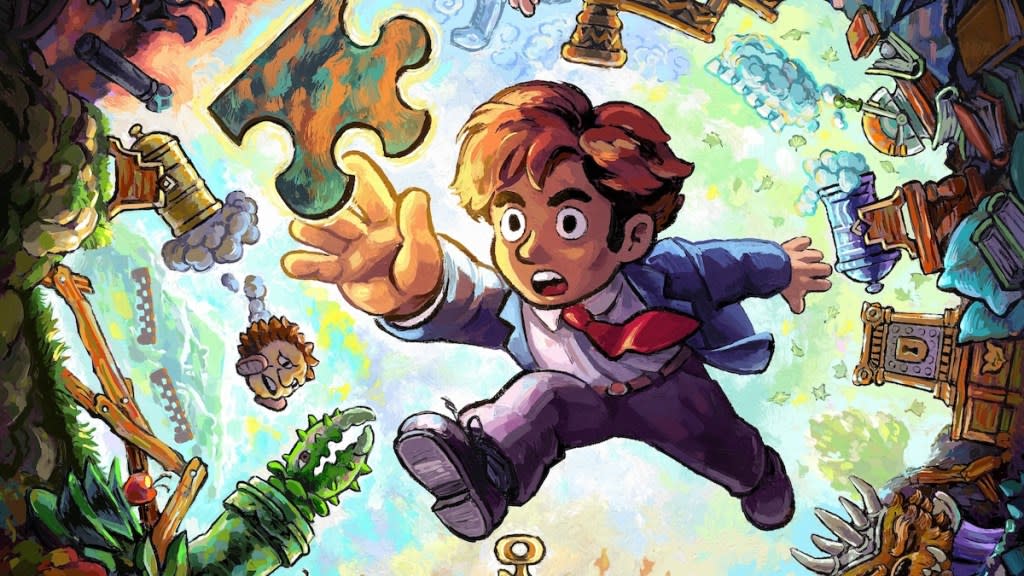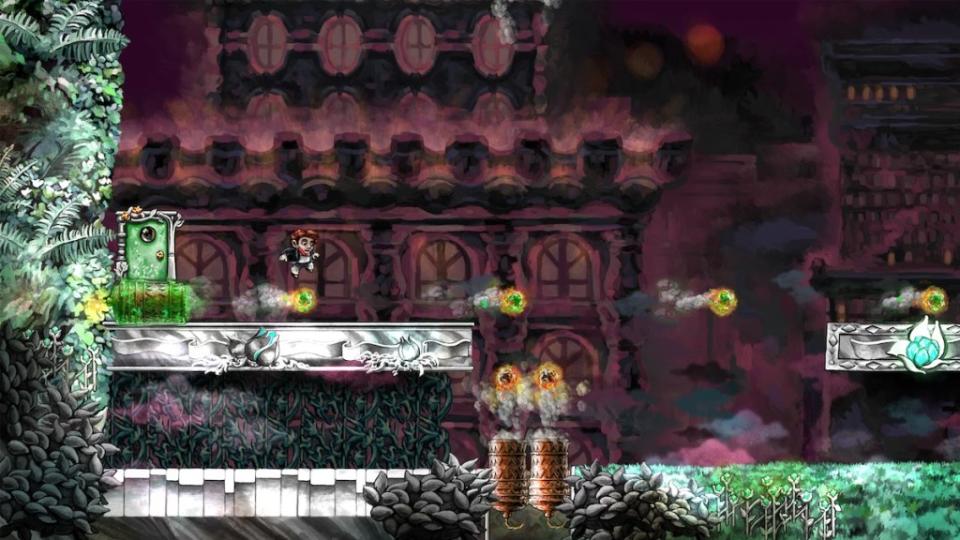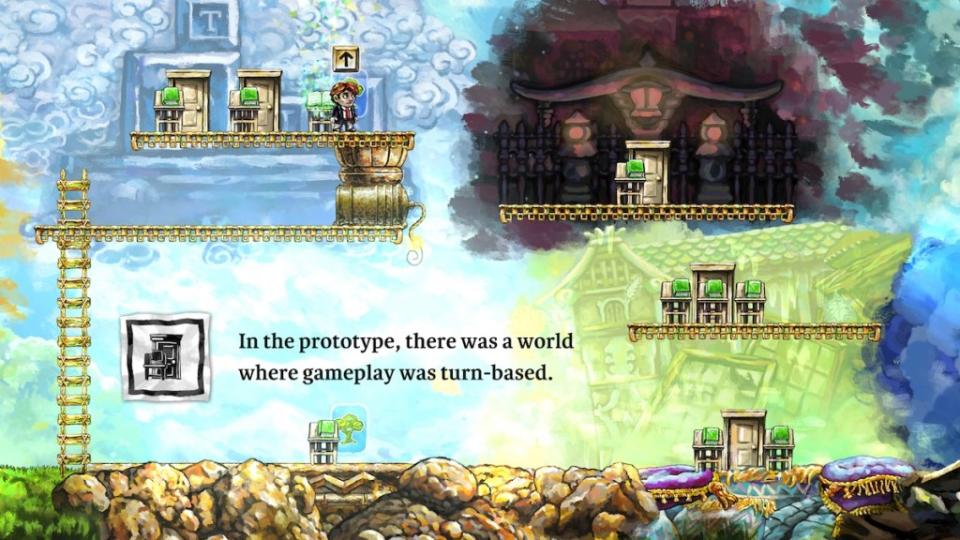Braid, Anniversary Edition (PS5) Review: Time Sink

- Oops!Something went wrong.Please try again later.
Booting up Braid, Anniversary Edition was, dare I say it, a bit like going back in time. Its opening moments — from the flickering, fiery logo to the foreboding opening track — instantly transported me back to 2008. Nostalgia can be a powerful drug but also a sobering one. As I flew through the game’s opening levels on autopilot (a side effect of having played through the original a dozen or so times), I began to realize just how much time had passed since Braid made its mark on the world. While it might be standard operating procedure at this point, Braid was one of the first few games that showcased the viability of independent, digital indie projects, ushering in a wave of new classics such as Bastion and Super Meat Boy.
Much like how the original made us rethink the fundamentals of distribution and project scope, Braid, Anniversary Edition tries to do the same with what we’ve come to expect from remasters and re-releases. While it’s become commonplace to take a last-get game, dial up the graphics settings, add some “new” content salvaged from the cutting room floor, and charge full price for it, Braid, Anniversary Edition isn’t content with simply rehashing the basics. In fact, this might be one of the most fully-fledged re-releases we’ve seen in years — more on that in a little bit.

For those who aren’t familiar with the original release, here’s a bit of a refresher. Braid is a puzzle platformer of sorts, though, depending on who you ask, trying to neatly fit it into a single box is a bit of a fool’s errand. When I first played it, back when I was a teenager and hadn’t forayed into the world of games media and game dev, I’d have described it as a neat little indie game that marries traditional platforming with time manipulation. More than 15 years later, I could probably spend hours waxing poetic, but I’d also sum it up as a brilliant deconstruction of Super Mario Bros. that, above all, respects the player’s time and intelligence.
There’s also the matter of the game’s “story” (though I use that term rather loosely). A cursory Google Search will yield countless essays and critiques about Braid’s “meaning” and “metaphors,” and to be fair, a lot of these analyses do hold water. I won’t do a deep dive into what Braid means to me, largely because it’s one of those games that will mean something different to each person. To me, it’s a reflection on the circular nature of the choices we make, the consequences of those choices, and how our regrets and (oft-warped) memories shape our future choices. On the other hand, some cultural luminaries, such as the venerable Soulja Boy, have completely different interpretations of developer Jonathan Blow’s timeless classic.
Regardless of what Braid might mean (or does mean) to you, my recommendation is simple: if you have yet to give it a go for yourself, Braid, Anniversary Edition is the best jumping-off point for you to dive in. For those who’ve already embarked on their own journey of bending time and saving princesses, I still strongly recommend giving this one a go, but for wholly different reasons.
The massive jump in resolution, new environmental effects and animations, as well as the remixed sound, would be enough of a reason for most to shell out for a remaster, but Braid, Anniversary Edition takes things even further. After trying to shoehorn in commentary nodes into the game’s existing levels, Blow went in the complete opposite direction, adding 40 or so brand new levels that were designed in tandem with the detailed behind-the-scenes commentary he and his team were looking to add.
These new pack-ins are available from the get-go, and it’s hard to overstate just how in-depth the developer insights are. While some are relatively straightforward and shed light on the origins of the game and its mechanics, others take the form of technical deep dives, digging into bitmap compression and unpacking, the physics, and math that govern the game’s rules and systems, and so much more.

Admittedly, some of these topics won’t be as easily digestible by all players, but the dozen or so hours of developer commentary to dig through is well worth the price of admission, and there’s a satisfying interplay as you play through a level that reflects the commentary you’re actively listening to. Admittedly, the way it’s all organized and split up can be a bit confusing to navigate, and a simplified checklist would have gone a long way in making sure you don’t miss any of it.
Putting aside that minor issue, the most divisive thing about Braid, Anniversary Edition might be how little of the core package has changed. Aside from the visual facelift, the core mechanics and gameplay are just as they were back in 2008, and that more or less dictates who this remaster is for. Those who were turned off by Braid’s strictly linear progression and uncompromising puzzles are unlikely to have a change of heart all these years later. For longtime fans or those who have yet to experience this timeless classic for themselves, Braid, Anniversary Edition is a must-play.
Incredibly rewarding puzzles that feel appropriately challenging
The beautifully-drawn graphics and evocative soundtrack have been given a fresh coat of paint
Packed to the brim with new content
The uncompromising and decidedly linear levels might trip up some players
Developer commentary can be a bit daunting to navigate
9
Disclosure: Review copy was provided by Thekla.
The post Braid, Anniversary Edition (PS5) Review: Time Sink appeared first on PlayStation LifeStyle.

